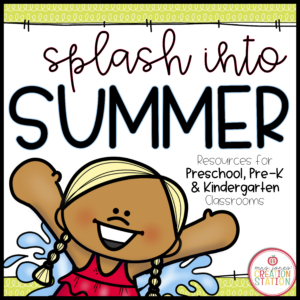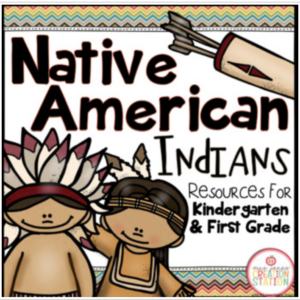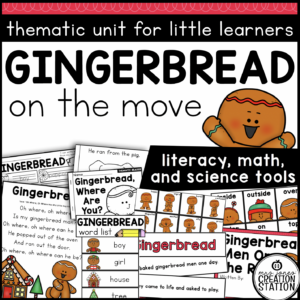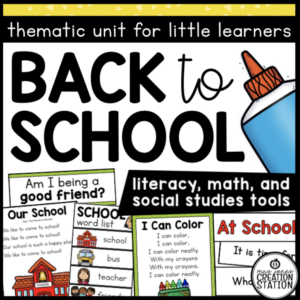Menu
This dental health resource includes thematic lessons, activities, poems, songs and centers for your little learners.
Buy the BUNDLE and SAVE! You can purchase this resources in the Thematic Activities for Little Learners Bundle and the Little Learners Mega-Bundle!
____________________________________________________________________
THIS RESOURCE INCLUDES
Lesson Resources
Week 24 Plans
This is a template for lesson plans during a dental health unit at school. Pick and choose what ideas and resources work for your learners.
Dental Health – Whole Group
These resources can be used during whole group instruction for a dental health theme. They include a poem, word cards, tracing page and table sign in sheets.
Healthy Teeth Interactive Poem
Use this poem during a thematic lesson, whole group or a literacy center and have learners the foods that eat for healthy or unhealthy teeth.
Lesson Plans
Dental Health Thematic Plans
Use these plans as a guide for engaging dental health read alouds and activities in the classroom.
Brush Your Teeth
Read Pony Brushes His Teeth and introduce the egg experiment using the anchor chart resources and printable included.
Tooth Decay
Read Make Your Way For Tooth Decay and have learners observe the difference between eating health and unhealthy foods. Introduce apple experiment..
How Many Teeth?
Read How Many Teeth? and create a primary teeth anchor chart and model using the organizational printable, playdough and beans.
Teeth Have Jobs, Too
Review anchor chart from previous lesson. Have learners model how teeth, cut, tear and mash food.
Dentist Visit
Read Why We Go To The Dentist and have a local dentist visit learners to discuss dental health.
Dentist Sensory Charts
Explore the dentist office with the five senses. Complete the charts together and have learners draw and write about the dentist using their senses on the interactive page.
Brush Our Teeth Predictable Chart Class Book
Use this resource to create a class book from the predictable chart created during the week.
Literacy Centers
Literacy Center | Letter Sort
Have learners sort the letter cards by capital or lowercase.
Literacy Center | Sight Word
Have learners read, make and write the sight words on each card using the mats provided..
Literacy Center | Vowel Sort
Have learners sort the pictures by their vowel sound on a pocket chart or using a small container or brown bag.
Math Centers
Math Center | Equations With Ten
Have learners clip the correct equation with 10 for each of the cards.
Math Center | Match The Pattern
Have learners find the match pattern strips that match.
Math Center | Number Order
Have learners place the cards in number order counting up or counting down.
WEBSITE | FACEBOOK | INSTAGRAM | PINTEREST | TEACHERS PAY TEACHERS
© Mrs. Jones’ Creation Station, Inc
How can I see what is new in the MJCS store?
Be the first to know about new discounts, freebies, and new products. You can also subscribe to our newsletter to receive access to resources only available to MJCS subscribers, as well as, special offers and ideas!
How can I get credit for my TpT purchases?
Go to your account button at the top of the page. Under the “Buy” section, click “My Purchases “. Beside each purchase you’ll see a Provide Feedback button. Simply click the button and you will be taken to a page where you can give a quick rating and leave a comment for the product. Each time you give feedback, TpT gives you feedback credits that you use to lower the cost of your future purchases. Please leave detailed feedback for each resource, so we are able to create better resources for teachers and students.
How can I find a certain activity in a large PDF file?
If the resource you purchase has a variety of activities compiled into one PDF find the table of contents and click on the activity title. This should take you to that specific activity in the resource.
What can I do if I have a question about a resource?
If you have any questions regarded a resource before purchasing please email me at mrsjonescreationstation[at]gmail.com. Once you have purchased the resource you may use the “Product Q and A” tab on the product page to ask a question, as well.
How do I know if a resource has been updated?
Go to your account button at the top of the page. Under the “Buy” section, click “My Purchases “. Choose to “sort by: recently updated” to see what resources have been updated since you downloaded them last. You can download any updates from there. If a file has been updated, you will see a notification under the resource that says “Newly Updated – Download for Free!”
This item is a paid product created by Mrs. Jones’ Creation Station, Inc. Copying any part of this product, redistributing, selling or placing it on the internet in any form is strictly forbidden and is a violation of the Digital Millennium Copyright Act (DMCA). Thank you for respecting our work!
YES, YOU CAN…
NO, YOU CAN’T…
Click here for a detailed post with step-by-step directions.
You will need to download fonts specified in the resource and install it on your computer before downloading the editable file.
Install the most recent version of Adobe Reader onto your computer. If you have any problems editing, viewing or printing a file make sure your Adobe Reader is updated.
Now you can download the file to your computer. Once the file has downloaded open in Adobe Reader. You should be able to view the editable fields and the text should match the product description. If you have any problems editing the file, make sure you have followed the directions above and then contact me at mrsjonescreationstation[at]gmail.com




